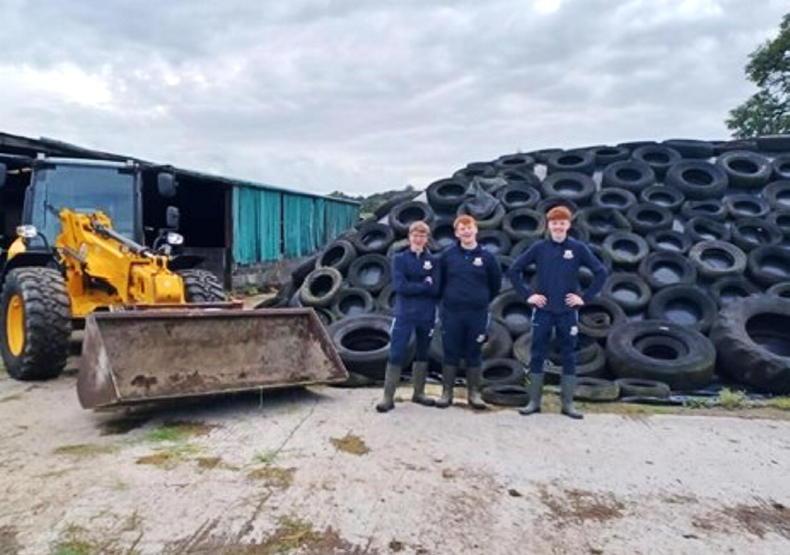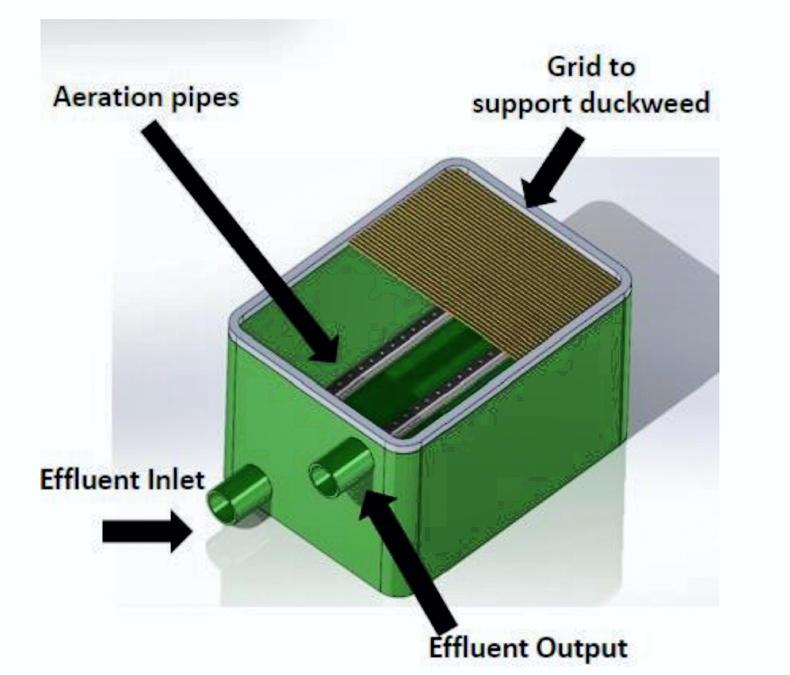Three students at Moate Community School, Co Westmeath, have developed a means of growing a native waterweed in slurry tanks, reducing nitrates and providing feed for livestock.
Using a prototype and conducting research with farmers, they found that duckweed can be grown on the surface of an effluent or slurry tank on wire mesh, harvested and fed to cattle.
Through its growth, the duckweed is also found to reduce nitrates and phosphates in the slurry.
Daniel Lynam, Éanna Maxwell and Nathan Downes - all TY students - showcased their project ‘Can Native Waterweeds Solve Farmer's Feed and Pollution Problems?’ at the BT Young Scientist Exhibition.
Duckweed
Speaking to the Irish Farmers Journal, they described how with the support of their teacher Ms Mairead Cusack, they first studied Irish canals from biodiversity maps last summer.
In this way, they sourced the native waterweed duckweed (lemna minor), which is found commonly across the country.
The teens then designed a prototype with a lid on it and a wire mesh underneath, which would be the top of the slurry or effluent tank.

(L-R) Éanna Maxwell, Nathan Downes and Daniel Lynam conducting trials. \ Mairead Cusack
Daniel, Éanna and Nathan diluted slurry down to a concentrate suitable for the duckweed’s growth and spread the plant across the wire mesh. In this way, they also tested dairy washings.
Pollutants were added to the test at a range of dilution levels, with the highest concentration being 20%. They found that the duckweed grew best in optimum conditions of 15°C to 30°C and at pH 6-9.
Outcome
After 20 days, the students found that all nitrates and phosphates had gone out of the dairy washings and with only small percentages left in the slurry.
Raising up the mesh at the top of the tank, the students harvested the duckweed and also fed it to cattle.
They worked with Grennans to conduct a commercial feed test of the duckweed. They found that the cattle liked eating the native, non-invasive plant and that it had a high protein content of 17%. However, the dry matter in the plant was low, at 6.7% to 8%.

How duckweed would be grown in slurry tanks on farms. \ Mairead Cusack
The TY students found that the duckweed would be good to feed mixed with silage to cows post-calving to help them recover their reproductive tracts.
In terms of the next steps, the trio said that they would require testing in bigger tanks, but were confident that, if supported, their initiative could be rolled out across Irish farms.
Nathan, from a beef farm, said he wants to study agricultural science in UCD in future, dairy farmer’s son Éanna has his eyes on dairy business and Daniel wants to study chemistry.
They thanked their teacher Ms Cusack and Grennans for all their support.
Three students at Moate Community School, Co Westmeath, have developed a means of growing a native waterweed in slurry tanks, reducing nitrates and providing feed for livestock.
Using a prototype and conducting research with farmers, they found that duckweed can be grown on the surface of an effluent or slurry tank on wire mesh, harvested and fed to cattle.
Through its growth, the duckweed is also found to reduce nitrates and phosphates in the slurry.
Daniel Lynam, Éanna Maxwell and Nathan Downes - all TY students - showcased their project ‘Can Native Waterweeds Solve Farmer's Feed and Pollution Problems?’ at the BT Young Scientist Exhibition.
Duckweed
Speaking to the Irish Farmers Journal, they described how with the support of their teacher Ms Mairead Cusack, they first studied Irish canals from biodiversity maps last summer.
In this way, they sourced the native waterweed duckweed (lemna minor), which is found commonly across the country.
The teens then designed a prototype with a lid on it and a wire mesh underneath, which would be the top of the slurry or effluent tank.

(L-R) Éanna Maxwell, Nathan Downes and Daniel Lynam conducting trials. \ Mairead Cusack
Daniel, Éanna and Nathan diluted slurry down to a concentrate suitable for the duckweed’s growth and spread the plant across the wire mesh. In this way, they also tested dairy washings.
Pollutants were added to the test at a range of dilution levels, with the highest concentration being 20%. They found that the duckweed grew best in optimum conditions of 15°C to 30°C and at pH 6-9.
Outcome
After 20 days, the students found that all nitrates and phosphates had gone out of the dairy washings and with only small percentages left in the slurry.
Raising up the mesh at the top of the tank, the students harvested the duckweed and also fed it to cattle.
They worked with Grennans to conduct a commercial feed test of the duckweed. They found that the cattle liked eating the native, non-invasive plant and that it had a high protein content of 17%. However, the dry matter in the plant was low, at 6.7% to 8%.

How duckweed would be grown in slurry tanks on farms. \ Mairead Cusack
The TY students found that the duckweed would be good to feed mixed with silage to cows post-calving to help them recover their reproductive tracts.
In terms of the next steps, the trio said that they would require testing in bigger tanks, but were confident that, if supported, their initiative could be rolled out across Irish farms.
Nathan, from a beef farm, said he wants to study agricultural science in UCD in future, dairy farmer’s son Éanna has his eyes on dairy business and Daniel wants to study chemistry.
They thanked their teacher Ms Cusack and Grennans for all their support.









 This is a subscriber-only article
This is a subscriber-only article










SHARING OPTIONS: